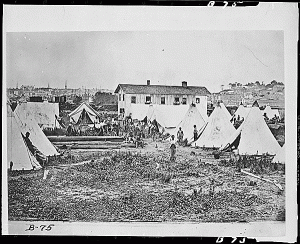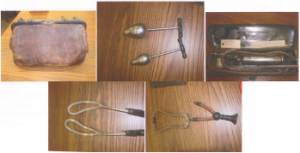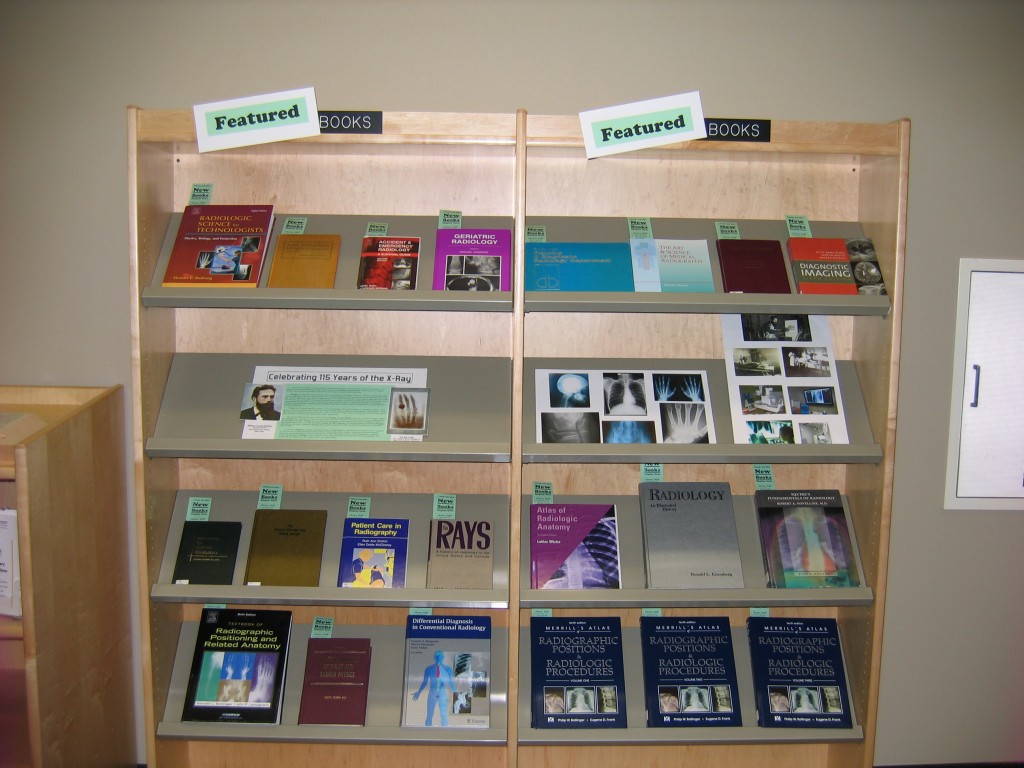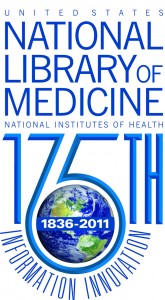
Contraband camp, Richmond, Va, 1865, image courtesy of the US National Archives
Here’s a great post about the first US sponsored hospital for African Americans from Jill L. Newmark, exhibition specialist in the History of Medicine Division of the National Library of Medicine, National Institutes of Health (NIH) in Bethesda, Maryland.
On a parcel of swampy land in northwest Washington, D.C. bounded by 12th, 13th, R and S Streets N.W., a tented camp and hospital once stood that served thousands of escaped slaves and black soldiers during the American Civil War. Known as Contraband Camp, it contained one of the few hospitals that treated blacks in Washington, D.C. during the war and whose staff, including nurses and surgeons, were largely African American.
Read more: Contraband Hospital, 1862-1863: Health Care For the First Freedpeople

Expectantly, when doctors did house calls, they depended on their knowledge as well as the considerably well thought out contents placed inside their bags.
Most had six compartments that allowed for a wide range of necessities to be stored; to name a few: injections, gauze, sutures, needles, gloves, and pills. More contents usually meant that the location of practice or closest hospital were farther away.
The bag was usually kept in the trunk or in the vehicles interior, however the hot summer months and freezing temperatures during winter presented challenges for some of its contents. Bottles of sterile water and ampoules were sometimes frozen solid which meant that they had to be thawed out before being administered and even then have the possibility of losing its potency.
Get an up close look! —> Currently on display in the Library Commons
The full-text of the complete run (1941-2001) of the Star, a bimonthly newsletter published by the patients of the U.S. Public Health Service Hospital, Carville, Louisiana is now available via the Louisiana Digital Library. This collection was created with the cooperation of the National Hansen’s Disease Museum.
Royal Society Publishing has opened their archive to the public free of charge. This archive includes “all articles from Philosophical Transactions of the Royal Society, first published in 1665 and officially recognised as the world’s first ever peer-reviewed journal.” The archive covers 250 years of scientific discovery and includes covers all the publishers journals. Only articles more than 70 years old will be accessible. My favorite from the first volume (1665) is “A Relation of Persons Killed with Subterraneous Damps.”
LSUHSC Libraries do have access to the most recent content that is not free to the public. Access to recent matieral is available to LSUHSC faculty, staff & students. It can be accessed off-campus with a valid LSUHSC library barcode & PIN. You can find more information at our remote access webpage.
If you have ever visited the library commons, more likely than not you have noticed the collection of antique medical equipment on display. The display cases boast a wide and interesting array of Old & Rare inventory . . . so interesting in fact many wonder what these items were used for. And when.
In order to solve these mysteries the Isch?® Library plans to give brief history lessons about items in the display case via our blog.
First up is Davis & KidderÔÇÖs Patent Magneto Electric Machine for Nervous Disorders.
This particular machine is dated August 1, 1854 and like each Magneto Electric Machine created, the label inside the box lid provides detailed instructions for proper treatment.
ÔÇ£Directions: Connect two Metallic Cords or wires with the socket in the ends of the box, and apply the handles connected with the other ends of the metallic cords or wires to any part of the person through which it is desirable to pass the current of electricity.ÔÇØ For the full instructions (trust me, they are interesting and a bit scary) click here.
What purpose did this machine serve? The best description is found at Dr. Olgierd Lindan’s Collection of Unusual Medical Devices & Antique Electronics explains in simplest form that and electric current passed through the patientÔÇÖs body ÔÇ£generated by a pair of solenoids that spin against the poles of a large horseshoe magnet.ÔÇØ The electricity was believed to stimulate a healing reaction within the human nervous system.
Did it work? According to the above mentioned website, the treatment of this device is questionable. ÔÇ£The therapeutic value of the treatment, if any, was likely due to the placebo effect. With the electric shocks coursing through his body as he gripped the hand electrodes, the patient definitely felt that ‘something was being done’ about his complaint. Electricity was a new and novel force in the 1800’s and most patients had no prior exposure to it, adding to its curative mystique.ÔÇØ
Fun facts- each Patent Magneto Electric Machine was signed by the production company to ensure genuine authenticity of this machine. Testimonials were also printed on the inside lid delighting in the marvel of this machine.
The Aristides Agramonte Yellow Fever Collection was featured on the blog of the National Network of Libraries of Medicine/South Central Region and in the LOUIS: Louisiana Library Network newsletter (p.5-6). Great press for an important collection!
The National Library of Medicine has released a very interesting addition to their History of Medicine collection: World War II-era public health films.
These films cover a wide range of public health issues pertinent to this era. Five animated films starring ÔÇ£Private SnafuÔÇØ inform on issues like Personal Cleanliness, Cleaning Mess Gear and Drinking Water. There are also non-animated films that once educated military personnel on yellow fever, malaria and the use of DDT which was believed would cure common diseases. Interested to learn what information was important for women at war? Don’t worry- there is a film on that as well.
Available films have minor defects and scratches but are definitely worth watching!
The American Medical Association‘s news section (amednews.com) has released a slide show of historic (and contemporary) photos which illustrate the changing attitude to cadaver study in anatomy labs.
I must admit, I would have been creeped out to receive the Christmas card (slide 4) from the cadaver lab.
LSUHSC Libraries owns a few books on the medical implications of space flight. All are cataloged under the subjects Space Flight or Aerospace Medicine. All the books in our collection are between 50 and 20 years old, as this isn’t a popular area for monographs.
My personal favorite:
America’s astronauts and their indestructible spirit by Fred Kelly with a foreward by Buzz Aldrin. Published 1986, the author was a former NASA physician and a 1951 alum of the LSU Medical School.
Today is the 150th anniversary of the beginning of the American Civil War. The war is significant to the history of medicine because of the advances made in medicine during the conflict.
Also of significance are the institutions which were founded in the Civil War’s aftermath: the National Institutes of Health, the National Library of Medicine, and the Index Catalogue of the Surgeon-General’s Office, the pre-cursor to the modern MEDLINE.
The National Library of Medicine offers a couple of Civil War exhibits:
Life and Limb: The Toll of the American Civil War (2011)
Binding Wounds, Pushing Boundaries: African Americans in Civil War Medicine (2010)
A new article which is available online before print from Radiology analyzes the differences between an XRay machine from 1896 (found in a Dutch hospital’s storage area) and modern equipment. Wired has a great article on the research.
Remember the grant that the Libraries received last summer? The Aristides Agramonte Yellow Fever Collection is now available via the Louisiana Digital Library. This collection provides access over 130 full text historic books and journal articles dating from the 1790s to about 1930; the titles revolve around the epidemiology and pathology of yellow fever.
MeSH is the controlled vocabulary used by the National Library of Medicine to organize information in the health sciences; it is the underpinning of MEDLINE.
While first discussed at a symposium in 1947, the first volume of the printed subject headings was published in 1960. The last printed volume was issued in 2007, but the database (which is both alphabetical and hiearchical) continues to be available in electronic form as the MeSh browser.
NLM will offer a videocast on Thursday, November 18th from 1-2:30 (CST) by Robert Braude, PhD, entitled MeSH at 50 ÔÇô 50th Anniversary of Medical Subject Headings.
 To celebrate the 115th anniversay of the invention of the X-ray, a new display is now available in the library. It features many books on radiology. These books are available for check out.
To celebrate the 115th anniversay of the invention of the X-ray, a new display is now available in the library. It features many books on radiology. These books are available for check out.

 myLSUHSC
myLSUHSC



 To celebrate the 115th anniversay of the invention of the X-ray, a new display is now available in the library. It features many books on radiology. These books are available for check out.
To celebrate the 115th anniversay of the invention of the X-ray, a new display is now available in the library. It features many books on radiology. These books are available for check out.